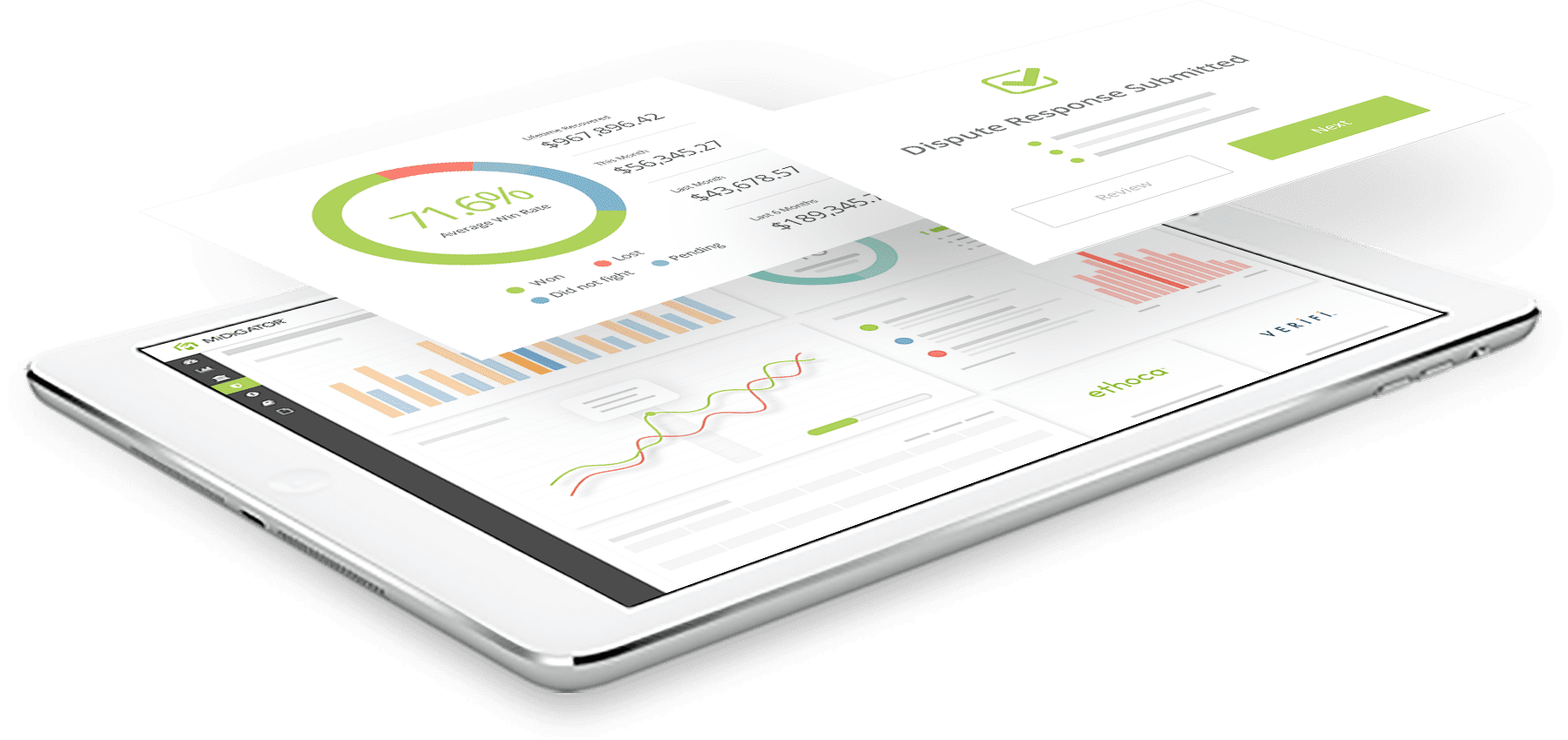A transaction dispute is a consumer complaint related to a credit or debit card purchase. Transactions are most commonly disputed because of fraud (unauthorized charge) and a lack of merchant follow-through (merchandise not as expected, services not performed, credit not issued, etc.).
When a transaction is disputed, the money originally paid to your business may be revoked and returned to the cardholder. And, the reputational damage associated with the dispute could impact your ability to process future transactions.
Since so much is at stake, it is essential to understand disputes and what it takes to protect your hard-earned revenue. Check these three need-to-know pieces of information:
Disputes vs. Chargebacks
The terms ‘disputes’ and ‘chargebacks’ are often used interchangeably. In the broadest sense, the two words do usually mean the same thing and yield a similar outcome. In fact, Visa® recently replaced ‘chargeback’ with ‘dispute’ in all of the card brand’s rules and processes.
However, the most accurate explanation of the two terms is this:
All chargebacks are transaction disputes, but not all transaction disputes are chargebacks.
The classification is based on which set of rules are governing the situation.
Federal Laws = Disputes
Federal laws were created to protect consumers and their debit or credit card accounts. These laws established transaction disputes, ensuring cardholders aren’t liable for unauthorized purchases.
Card Brands = Chargebacks
Federal laws prompted the card brands (Visa, Mastercard®, etc.) to create their own safeguards. The result was the chargeback process, protections that go above and beyond established legislation.
Check this article to learn more about the differences between federal dispute rules and chargeback regulations.
While some people use the terms synonymously, others think of disputes and chargebacks as a progression. Because of tools like prevention alerts and order validation, the following is a common thought process.
If the merchant is able to resolve the dispute, the situation might not advance to a chargeback.
And that’s an ok way to think of the terms too — just like it’s fine to use them interchangeably.
Don’t let the semantics confuse you. Ultimately, it really doesn’t matter which word you use. What matters is knowing how to minimize the impact that disputes have on your business’s bottom line.
The Dispute Process
The following is a simplified explanation of the dispute process and how a consumer complaint may turn into a chargeback.
Expand each section to learn more about the different phases.
A cardholder could dispute a charge for a variety of reasons. For example:
- The transaction was unauthorized. Someone used the card without permission.
- The merchant didn’t follow through on promises that were made. Maybe a refund wasn’t issued or the services weren’t described correctly.
- A mistake was made while processing the transactions. Billing errors can include things like charging the card twice or charging the wrong amount.
- The transaction description on the billing statement was vague or looked suspicious.
The cardholder can call the issuing bank, send an email, or mail a letter. The issuer might even have an online banking portal with a dispute feature.
If the dispute isn’t valid, the issuer can reject the case and hold the cardholder financially responsible for the transaction. For example, a transaction dispute usually has to be filed within 60 days of the statement being issued (chargeback timelines are a little longer — usually between 90 days and 120.)
But if the dispute is valid, the issuer is legally obligated to reimburse the cardholder. The funds can come from one of two places. Either the issuer takes a financial hit and accepts the loss. Or, the issuer uses the card brand’s dispute processes to revoke the money from the merchant and return it to the cardholder.
Order validation, such as Consumer Clarity and Order Insight, are that help the issuer determine if the cardholder’s dispute claim is valid or not.
If the merchant does use order validation, the issuer requests information to clarify the transaction and hopefully stop the case from going any further.
If the merchant doesn’t use order validation, the issuer advances the dispute to the next phase.
Prevention alerts are a technique. They help secure a refund for the cardholder without a chargeback.
If the merchant does use prevention alerts, the issuer notifies the merchant of the dispute. The merchant refunds the transaction and hopefully stops the case from going any further.
If the merchant doesn’t use prevention alerts, the issuer advances the dispute to the next phase.
The issuer uses the card networks platform to send the chargeback to the merchant via the acquirer (merchant’s bank).
If a chargeback is issued, there may be additional phases involved in the dispute resolution workflow. For example, cases of friendly fraud can be challenged. You, the merchant, would respond with a well-documented argument — which includes compelling evidence — in an attempt to recover the lost revenue. Review the full chargeback process here.
Usually, chargebacks are the final tool in the issuer’s tool box. A dispute analyst will first try other techniques to resolve the issue, saving the chargeback process as a last resort.
How to Avoid a Transaction Dispute as a Merchant
If transaction disputes and chargebacks are a new concept for your business, there are several things you should know.
The better you understand disputes, the better you’ll be able to manage them. And it’s never too soon to start learning — the more proactive you are, the less money you’ll lose.
Familiarizing yourself with consumer protections is a key step in the learning process. Take some time to understand why disputes happen, what the consequences are if they aren’t managed effectively, and tips to minimize their impact on your business.
Why do disputes happen?
According to card brand regulations, there are dozens of reasons why someone files a dispute. To simplify things, we’ve broken those reasons down into three categories. Most merchants assume criminal fraud is the biggest threat. But in reality, friendly fraud is usually much worse.
Learn more by clicking the topics below:
What if I get a lot of disputes?
Many in the payments industry consider dispute activity to be a reflection of your business’s reputation and credibility. The rate at which transactions are disputed is a metric to measure risk — the more disputes you receive, the riskier it is to do business with you. If your business receives more disputes than what is considered normal, there could be fines and penalties.
Learn more by clicking the topics below:
How do I manage disputes?
Managing disputes is a two-part process. First, you need to prevent as many disputes as possible. Then, you need to fight the disputes you couldn’t prevent. This will enable you to protect the maximum amount of revenue.
Learn more by clicking the topics below:
Resolve Transaction Disputes with Midigator
Midigator® is a , and we aim to remove the complexities of transaction disputes. If managing disputes and chargebacks seems like more than you can handle right now, let us help.
With our , , and , we’ll make it easy to get disputes under control and protect your revenue. Sign up for a demo today to learn more about available and create a strategy that is a perfect fit for your business.













